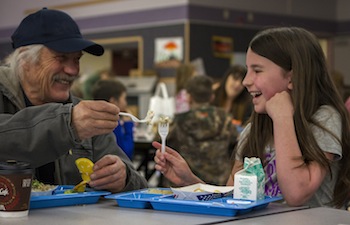Two stories in the June issue of National Fisherman got me thinking about the marketing of U.S. finfish and shellfish. One suggests that challenges the fishing industry faced 30 years ago remain today. The other spotlights an innovative Alaska program that could turn youngsters into seafood fans.
In our Fishing Back When section, one item from our June '84 issue tells how American fishermen were facing stiff competition from imports, including $980 million in shrimp, which accounted for 83 percent of the import total, along with whitefish, tuna and lobster.
"If [a country] is hawking a product that tastes mild and looks familiar, it will probably do well," the article noted. "If it can turn out the product cheaply, it will smile all the way to the export trading bank."
The import onslaught hasn't slowed down, has it? According to NOAA's FishWatch program, today the United States imports 91 percent of its seafood.
This month's Northern Lights column introduces us to one program in Alaska that aims to put local seafood in local schools — and in the process create new generations of fans of U.S. seafood. Tracy Gagnon, the community sustainability organizer for the Sitka Conservation Society, helped pioneer the Fish to Schools program in Sitka, Alaska. Its mission is simple, she says: Provide local fish for school lunches.
Local fishermen donate fish to the program and have been integral to its success. Over the last three years, 23 harvesters have contributed more than 2,000 pounds of seafood to the program.
Better still, every year on Valentine's Day fishermen are invited to an appreciation lunch at Keet Gooshi Heen Elementary School. The fishermen get to share a lunch featuring their catch with the students, who thank them for their delicious donations.
To me, what is great about this program is that in addition to providing schoolchildren with healthy lunches, it's creating a relationship between the students and the fishermen. Those students will know more about how their seafood is caught, about the people who catch it, and how they catch it.
That has the potential to create lifelong lovers of U.S. seafood every year. The more that we see marketing programs that educate the American public about the country's fishing industry and the people who catch their seafood, the greater the chance that those consumers will increasingly choose U.S.-harvested fish and shellfish over the imported variety.
Photo: Fisherman Spencer Severson toasts elementary student Ryleigh Devere at her school's annual appreciation lunch for the Fish to Schools program. Adam Taylor/Sitka Conservation Society photo







